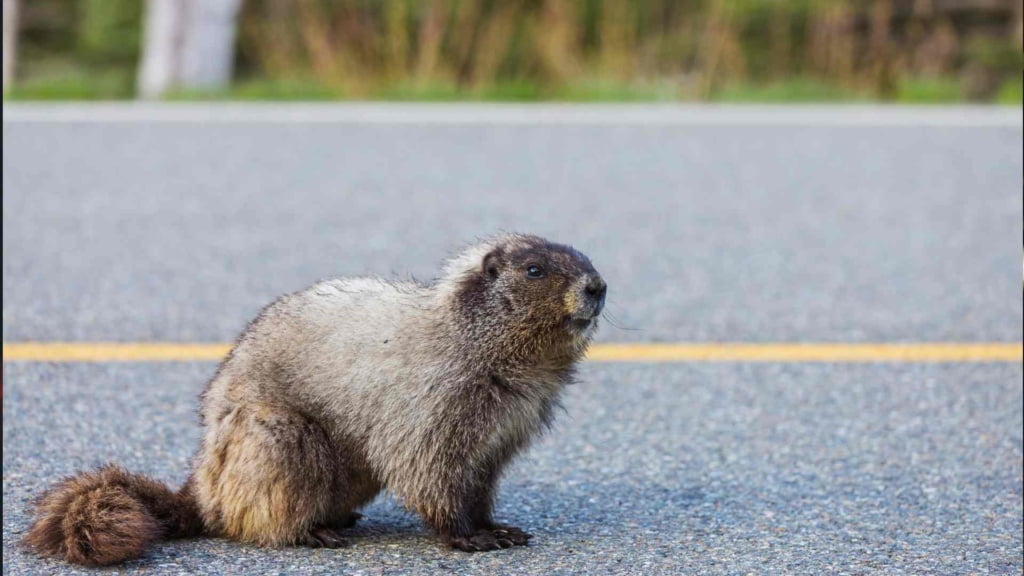Key Takeaways
| Fact | Description |
| Scientific Name | Marmota caligata |
| Family | Sciuridae |
| Size | 62 to 82 cm (24 to 32 in) long |
| Lifespan | 8 to 12 years |
| Diet | Herbivore, Diet consists of leaves, flowers, grasses, and sedges |
| Habitat | Southern Washington and central Idaho all the way north, and throughout much of Alaska south of the Yukon River |
| Conservation Status | Least concern |
Introduction
The Hoary Marmot, also known as Marmota caligata. This big, heavy ground squirrel is the biggest ground squirrel in North America and is often called “the whistler” because it makes a high-pitched sound to warn other marmots in its group about possible danger.
Physical Characteristics
Hoary marmots are quite distinctive in their appearance. They have short, heavy limbs, and a wide head. They are between 62 to 82 cm (24 to 32 in) long, including a tail that is 17 to 25 cm (6.7 to 9.8 in) long. Males are usually bigger than females.
The word “hoary” comes from the silver-gray fur on their shoulders and upper back. The rest of their upper body is covered in drab or reddish-brown fur. The top of their head is black, with a white spot on their muzzle, white fur on their chin and around their lips, and grizzled black or brown fur elsewhere.
Distribution and Habitat
Hoary marmot mainly live in high mountain areas up to 2,500 meters (8,200 ft) high, but you can also find them at or near sea level in British Columbia and Alaska. They are found from southern Washington and central Idaho all the way north, and throughout much of Alaska south of the Yukon River. They like to live in rocky areas or alpine meadows filled with grasses, sedges, herbs, and Krummholz forest patches.
Diet
Hoary marmot is herbivore. Their diet consists of:
- Leaves
- Flowers
- Grasses
- Sedges
Behavior and Lifestyle
Hoary marmots are diurnal creatures, meaning they are active during the day. They live in groups of up to 36 marmots, and their home is usually about 14 hectares (35 acres) big. Each group has one adult male who is in charge, up to three adult females, sometimes another subordinate adult male, and a number of young and subadult marmots who are up to two years of age.
Here are some interesting facts about their behavior:
- They hibernate for 7-8 months a year in holes they dig in the ground, often among or under big rocks.
- Each group usually has one main hole that they use for their hibernation and a few smaller holes that they use for regular sleep and to hide from predators.
- As it gets closer to the time for their hibernation, Hoary marmots like to socialize by play fighting, wrestling, social grooming, and touching nose to nose.
- These creatures have at least seven different types of calls, like chirps, whistles, growls, and whining sounds. A lot of these sounds are used to warn other animals about possible dangers.
Reproduction
Hoary marmots usually monogamous, have the same partner for life. However, in some southern areas, they might have more than one partners. These marmots start mating shortly after they wake up from hibernation in May. In some places like the eastern foothills of the Cascade Mountains in Washington State, as early as February. The female marmot is pregnant for 25 to 30 days, so two to five litter are born between the end of May and the middle of June.
Lifespan
Hoary marmots usually live for 8 to 12 years.
Conservation Status
Hoary marmots are currently listed as a species of least concern by the IUCN.

